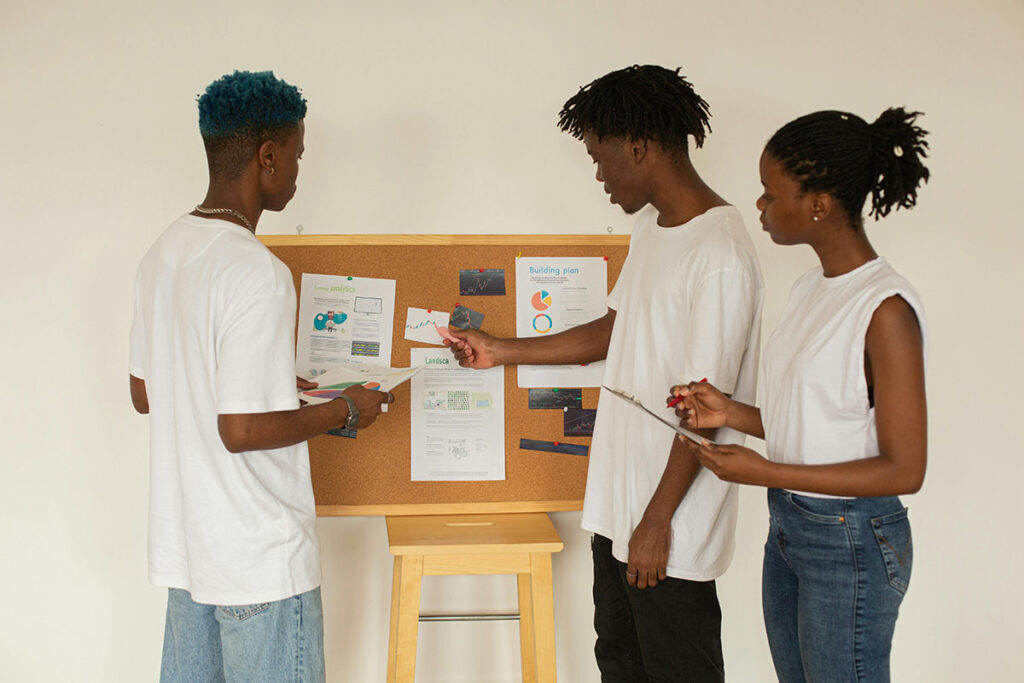Students investigate how to bring together different types of knowledge to make a case for environmental justice at a California school of their choice. Students learn that environmental injustices are deeply complex, interdisciplinary problems that require several different types of knowledge and expertise to effectively understand and address. Students investigate how to integrate different types of knowledge and evidence — such as ecological, historical, quantitative, qualitative, and moral — to make a case for an environmental solution. Students see this in action via a case study on dams on the Klamath River and the types of knowledge that led to their removal.
Students explore where to find data and information on environmental hazards in their case study location and what to do when information is conflicting. They examine how different groups and parties are affected, identifying factors that influence how those groups respond and considering other injustices. The unit culminates with students bringing different types of knowledge and evidence together to present a case study and plan for action.

“My students often refer to the experience and knowledge gained. I plan to use Seeds to Solutions lessons in the future.”
“There is something for all different kinds of learners. We are moving spaces, drawing, talking in big and small groups, writing. Some of my kiddos who would have been disengaged quite possibly the entire time were engaged in at least two or more parts of this lesson.”
“For my students who may not engage with abstract concepts, the real-life relevance of turning waste into soil for growing plants offers a clear, meaningful goal that they can understand and feel proud to participate in.”
“This did a great job of piquing students’ interest and sparking opposing points of view, which created lively discussions on the topic.”
“What I find interesting is that students are discussing the material outside of class time. I heard students discussing the ideas before class in the hallways and even during lunch periods.”
“This lesson brought in cultural stories from the original people who inhabited California. This is a perspective that is not often taught in science. I think that the kids liked having science be a little less facts and figures and more story.”
“Students really wanted to share their food traditions and look into how climate change might affect their food traditions.”
“I have learned ways to improve my teaching, and I have been at this for 38 years. The students are gaining a deeper understanding of what climate change is: what causes climate change, and the impact of climate change on crop yield.”
“They’ve never thought about stuff like this before, and now they’re sharing it. One girl said this was the only class that she went home and talked to her parents about.”
“Every lesson was so thoroughly designed, the case study design book was beautifully organized, and it helped to give my class a real-life understanding of how college/graduate-level academic research works. Being able to connect their research back to environmental issues they actually experience was simply icing on the cake. Well done!”
“The kids become more engaged because now they are actually actively doing things. They’re really having to look for themselves. It’s not given to them on a platter, but all the resources are right there.”
“I am so amazed and impressed by the depth of resources that you embedded in the teacher guide. This is really well put together.”

Kim Fortun, EcoGovLab, UC Irvine
Margaret Tebbe, EcoGovLab, UC Irvine
Prerna Srigyan, EcoGovLab, UC Irvine
Nadine Tanio, EcoGovLab, UC Irvine
Margaux Fisher, EcoGovLab, UC Irvine
Katie Vo, EcoGovLab, UC Irvine
Taranjot Bhari, EcoGovLab, UC Irvine
Aeris Melody Johnson, EcoGovLab, UC Irvine
Lena Fortun, EcoGovLab, UC Irvine
Sierra Howard, EcoGovLab, UC Irvine
Julia Lin, EcoGovLab, UC Irvine
Jennifer Janzen, WestEd
Maria Simani, CA Science Project
Matt Ellinger, Designer
Hosun Kang, UC Irvine
K. Lily Wu, OEHHA and Cal EPA
Wongyong Park, University of Southampton
Doron Zinger, CSU Dominguez Hills
Jean Flanagan, BSCS
Susan Lyons, Development Editor
Stacey Lane, Illustrator
Darin Newton, Development Editor
Erica Brauer, Granada Hills Charter
Shannan Johnson, Windsor USD
Graham Lockett, Culver City USD
Craig Manges, Lemoore UHSD
Kate Morris, The Waverly School
Laura Rivera, Torrance UUSD